I want to learn to read tarot, how do I start? – I get asked this question so frequently that I’ve decided write a blog post about it.
Here are some suggestions for how to get started. There is no single “right way” to go about learning tarot, my advice is for you to forge your own way, take charge of your learning and apply a method that keeps you engaged and interested. Ultimately, you must figure out what works for you.
Decide which tarot system you want to learn
In general, there are three different systems of tarot that you can learn, (1) the Thoth Tarot by Aleister Crowley and Lady Frieda Harris, developed between 1938 and 1943 and published in 1969, (2) the Tarot de Marseille (TdM) which is arguably the most historical deck, originating in Italy and France in the 15th century, and (3) the popular Rider-Waite-Smith Tarot (RWS) by Pamela Colman Smith and A. E. Waite and published by William Rider & Son in 1909. Each of the different systems have advantages and disadvantages.
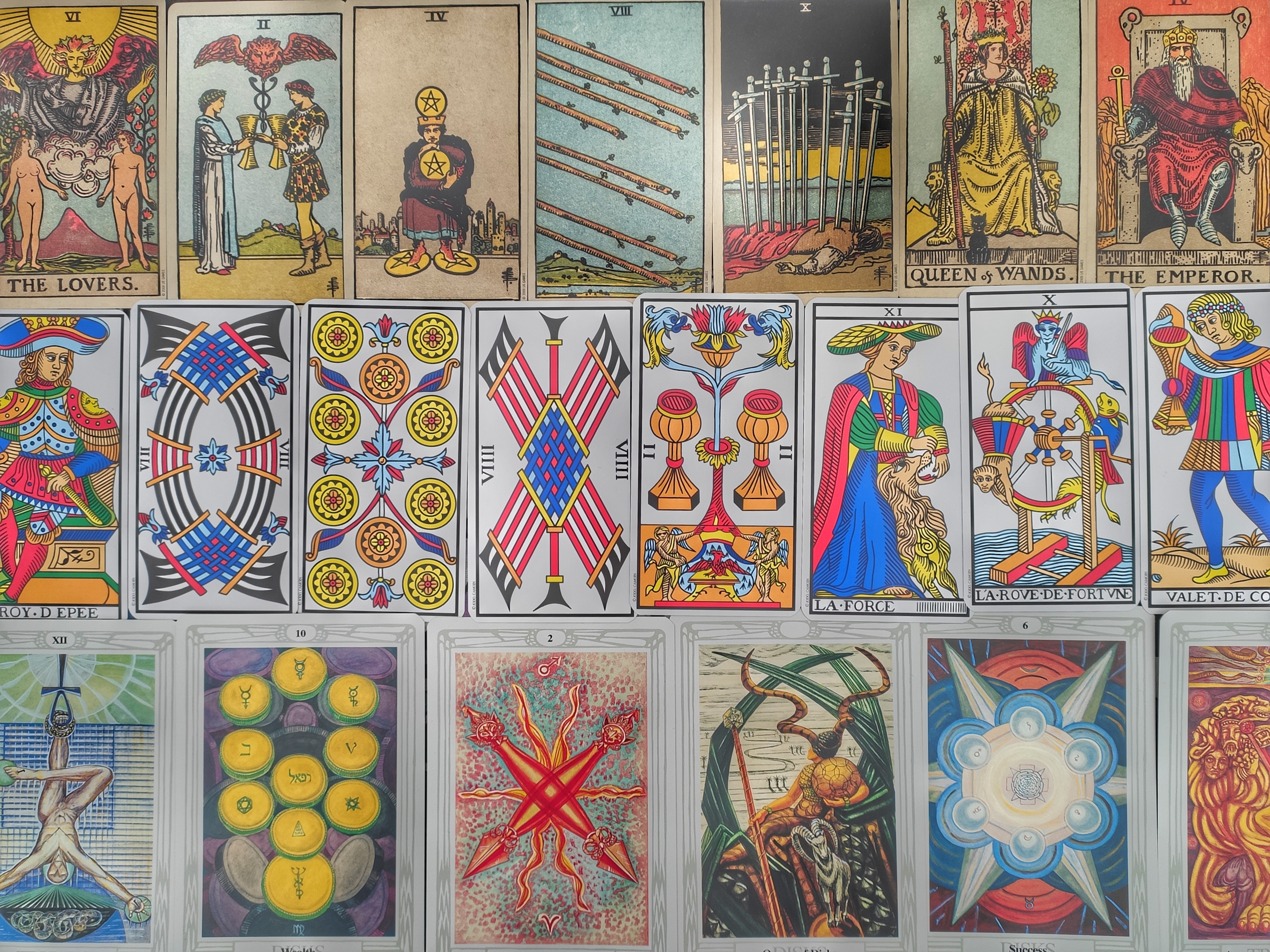
The Rider-Waite-Smith Tarot
Most pro-readers recommend the RWS Tarot to beginners because the Minor Arcana cards are fully illustrated – meaning that the “pip cards” (i.e. the numbered cards 1-10 in each of the suits) show detailed scenes that depict specific situations, making it easier to read the cards intuitively, easier to learn the symbolism as well as recall the traditional interpretations while reading.
The RWS tarot is very popular in contemporary culture, therefore there is a wealth of resources available – courses, books, videos and so forth – making learning very accessible. Nowadays many artists have created their own renditions of the RWS tarot and, as a result, there are many different versions of the deck on the market. This means that you can choose a deck with art that resonates with you – would you like a fairy, gothic, mermaid, steampunk, zombie, plant or an animal deck? Or would you like a deck with modern images? – The chances are there’s a RWS deck out there that fits your personal preferences and aesthetic.
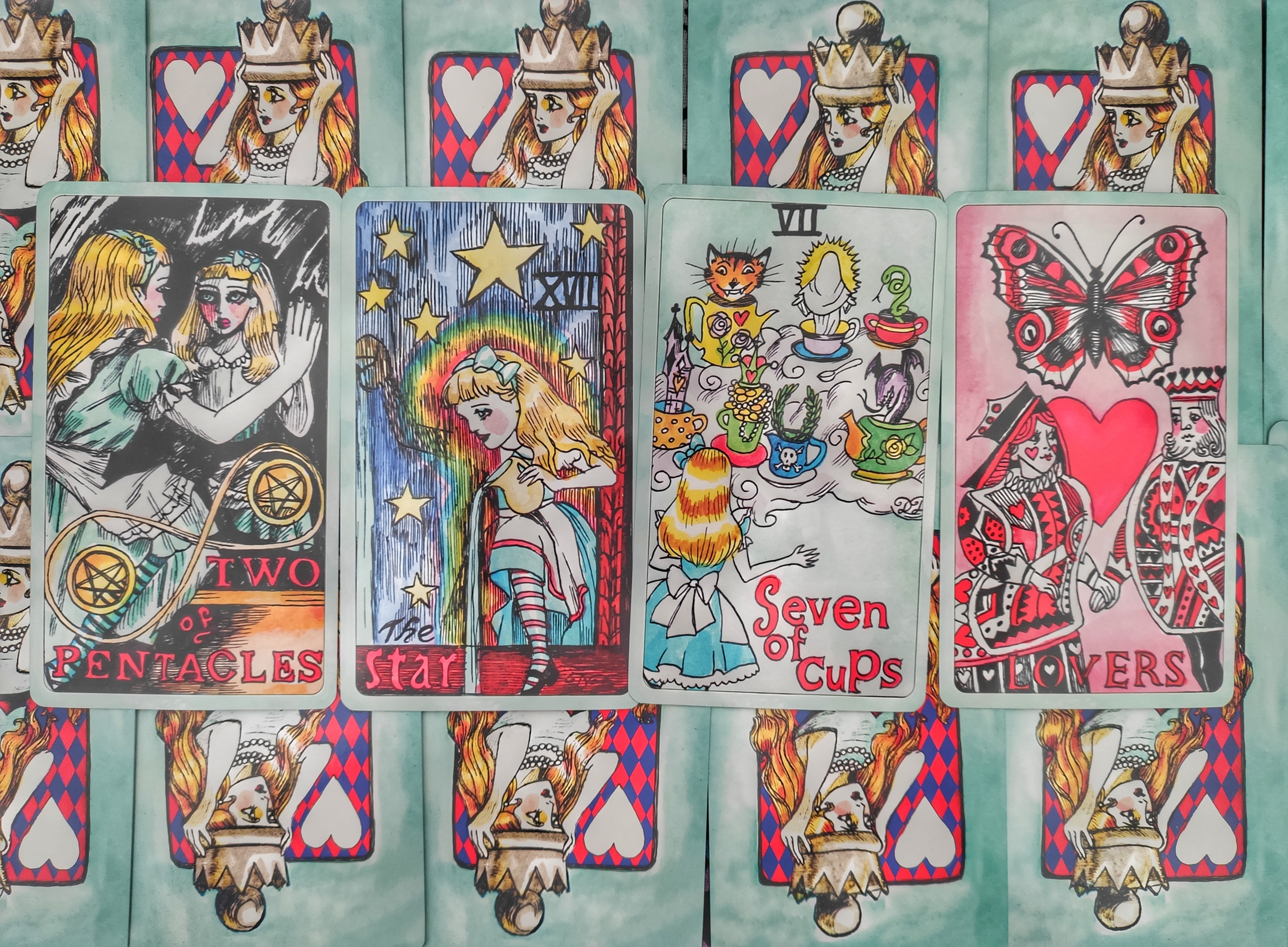
Tarot de Marseille
I first learned the TdM system and I think that there are many benefits of learning this system as a beginner. The Tarot de Marseille does not have scenes depicted on the pip cards as the RWS does. For example, in the TdM the 10 of Swords simply has 10 Swords illustrated on the card, the 3 of Cups simply has 3 cups on the card – and so forth. The interpretation of the TdM pip cards are influenced by numerology and the elemental correspondences of the suits, and the interpretations are much less prescriptive than the RWS. This means that the range of interpretations for each card is much broader, and you will have to develop and rely on your intuition to a greater extent. Many beginners find the TdM daunting for this reason, however there is a major advantage to learning the TdM first: If you learn the TdM you will be a much more versatile reader and it will be easier to learn the other two systems should you so choose. The RWS deck can be described as depicting specific situations encompassed by the TdM deck, therefore if you read the TdM you will already have an understanding of the RWS interpretations. In addition, you will have learned some of the fundamentals used also in the Thoth, and you will even be able to read playing cards (the hearts, clubs, spades and diamonds correspond to the four suits of tarot: cups, wands, swords and pentacles).
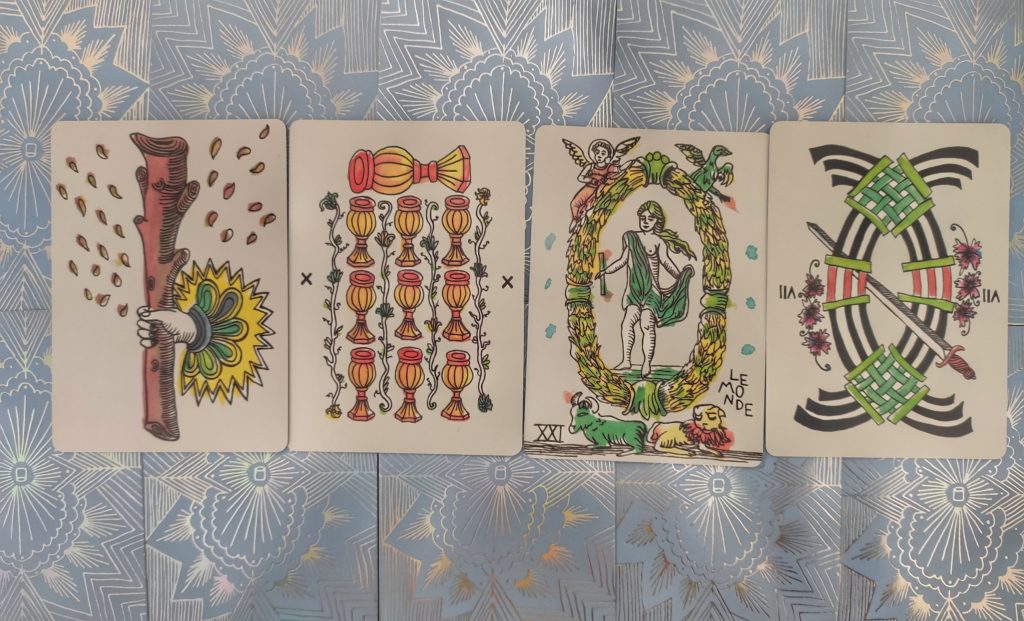
The Thoth Tarot
The Thoth Tarot is considered by some to be the most advanced deck. When designing the Thoth Tarot, Crowley and Harris incorporated themes from many different disciplines including astrology, the Kabbalah, numerology, elemental correspondences, Ancient Egypt, mythology, alchemy and sacred geometry, as well as symbolism and themes from occult societies, including the Hermetic Order of the Golden Dawn and Ordo Templi Orientis. In addition, the pips of the Thoth Tarot are similar to the TdM, lacking illustrations of specific scenes as depicted in the RWS, instead conveying geometry, colour, numerology and elemental correspondences. For this reason, learning the Thoth may seem like a mammoth task for a tarot newcomer with no prior knowledge of the occult. Most do not recommend the Thoth Tarot to a complete beginner; however, I would never presume to talk anyone out of learning the Thoth, especially if you are interested in learning other occult systems: If you learn to read the Thoth, you will learn the fundamentals of many different esoteric disciplines.
Myth: You have to learn the RWS tarot first before you can learn the TdM or Thoth. Many readers recommend the RWS to beginners because it’s arguably easier to learn. However, the other two systems are also worth learning. Decide for yourself which deck inspires you the most and go with that!
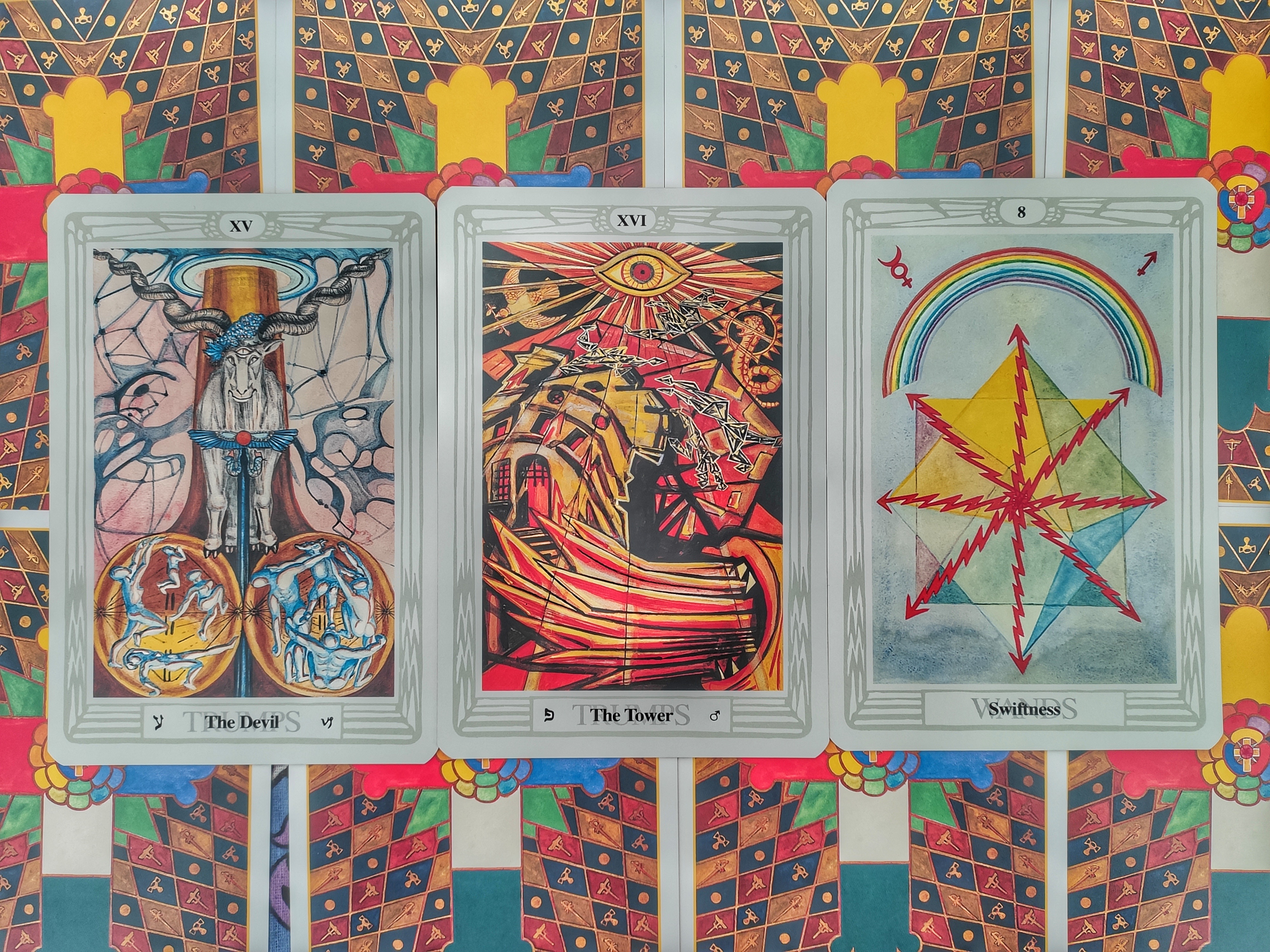
Get your own tarot deck
Consider the system (TdM, RWS or Thoth) and the artwork, and get your hands on a deck that resonates with you. The deck should make you feel intrigued, excited and curious! You can have a look at deck reviews and suggestions online before making a purchase – read blogs and reviews on the web and watch deck reviews on YouTube. Most decks come with a “little white book,” which is a small paper booklet with keyword meanings for each card, however, consider getting a tarot deck that comes with a good guidebook (look up reviews on the guidebook too) as your first deck. Alternatively, you can purchase a general book on the specific tarot system and symbolism separately (see book suggestions below) if you prefer.
Myth: Your first tarot deck must be a gift to you from another person. You don’t have to be “gifted” your first tarot deck – if you want to start reading tarot, go ahead and get yourself a deck!
Recommended books
There are tons of books on tarot available, these are a few of the books that I recommend:
Holistic Tarot by Benebell Wen – A truly massive book, this is a comprehensive volume that is probably the only RWS tarot book you’ll ever need.
The Way of Tarot: The Spiritual Teacher in the Cards by Alejandro Jodorowsky and Marianne Costa – one of the best books available on the TdM system (Jodorowsky’s deck is great too).
The Book of Thoth by Aleister Crowley – If you’ve decided to “climb the Thoth Mountain,” then this is, in my opinion, the most important book on the Thoth.
A Magical Course in Tarot by Michele Morgan – this is a quick read specifically for beginners who want to learn to read intuitively.
Books by Mary K. Greer – one of the big names in tarot, Greer has books on may different aspects of tarot that can supplement your learning. Her books on the Court Cards and the Reversals are simple and useful reference books. She also has other titles you may be interested in, including Tarot for Your Self, Tarot Mirrors: Reflections of Personal Meaning, Tarot Constellations: Patterns of Personal Destiny, and Tarot & Magic.
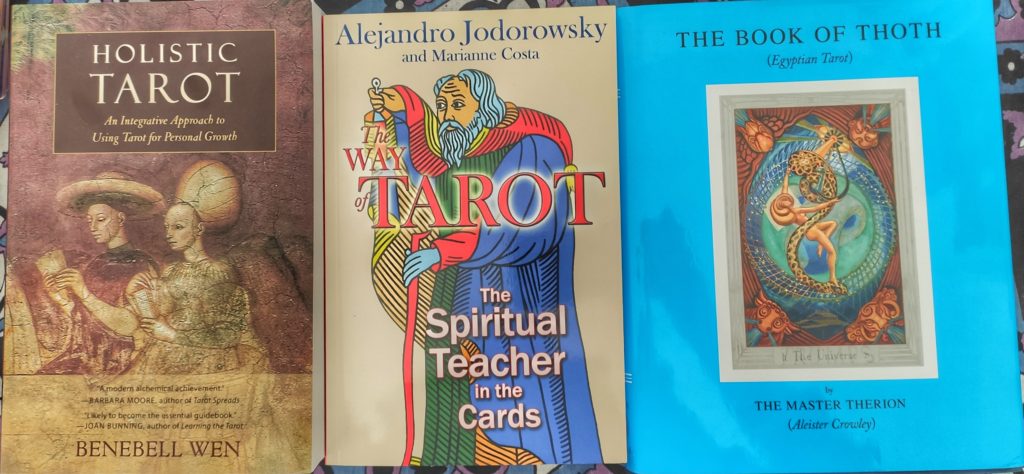
Do a daily tarot draw for yourself
Get into the habit of pulling a card for yourself every morning. Try to read the card intuitively first, then have a look at the guidebook and consider how that impacts your intuitive reading. Journal about the daily draw: How does it make you feel? What do you think it means? What do you think the card says about what you should focus on for the day? In the evening before you go to sleep reflect on the card you drew and think about how any relevant themes from the card played out in your day.
Myth: You should not read tarot for yourself. In my opinion, one of the most beneficial uses of tarot is for reading for yourself! You will gain insight into your inner workings, your situation, who you really are – you can use tarot for planning and strategizing, you can use tarot for brainstorming and problem solving, you can use tarot to deepen your spiritual connections… The sky is the limit!
Schedule time for formal study
It’s up to you to decide your learning pace and how tarot study will fit into your schedule. Maybe you want to start reading a book on tarot a little bit every day? Or perhaps it makes more sense for you to take a few hours for study on the weekend? Perhaps you wish to enrol in a course? The key here is to find what works for you and be consistent.
Learn a few tarot spreads
When reading tarot, you can draw multiple cards that you lay down on the table in a spread. Each position in the spread refers to a specific aspect of the question/situation you’re reading about. In the beginning you can start by drawing single cards, but soon you will want to try drawing more cards to get a clearer understanding of a situation. Next, you may want to try simple three-card spreads, such as Past/Present/Future or Advantages/Obstacles/Outcome. Then you may want to try some classic spreads such as the Horseshoe spread, or the Celtic Cross spread. You can search online for free spreads, there are also books available on spreads (your deck guidebook may have a few spreads in it) and, eventually, you may want to design your own spreads!
You can even try out my spreads! I always list the spread positions for my readings in my shop – feel free to try them out yourself 🙂
Keep it simple
My experience is that consistency in learning is much more important than learning quickly. Don’t panic and try not to take on too much too soon. If the suits stress you out, then start by only reading with the Major Arcana (some decks only contain the major arcana – leaving the suits out altogether). Conversely, if the Majors seem too complicated then perhaps you want to start with the suits (or a specific suit). If the Court cards are giving you a headache, then leave them for a rainy day.
Some tarot readers interpret cards differently based on whether the card is upright or reversed. When you draw a reversal, ask yourself what it could mean, but don’t worry about reversals too much in the beginning. You can learn the upright meanings first, then you can decide whether you want to tackle the reversals. I learnt reversals and upright meanings concurrently, but it depends on what works for you. I think it’s best not to overthink it!
Myth: You have to learn to read reversals. In my opinion, reversals are useful and can add nuance to a reading, however it’s up to you whether you wish to learn them. Indeed, many professional readers don’t read reversals at all – they are entirely optional!
Have fun!
Continue to nurture your curiosity and interest in tarot. Watch YouTube videos on tarot, read books, read the cards as often as you can for yourself and friends. There are groups online, on forums and social media that support learning and where you can offer (free) readings to people so you can practise reading tarot. Read frequently, enjoy it, and watch your intuition and knowledge grow!
Let your interest and intuition guide you! Good luck!


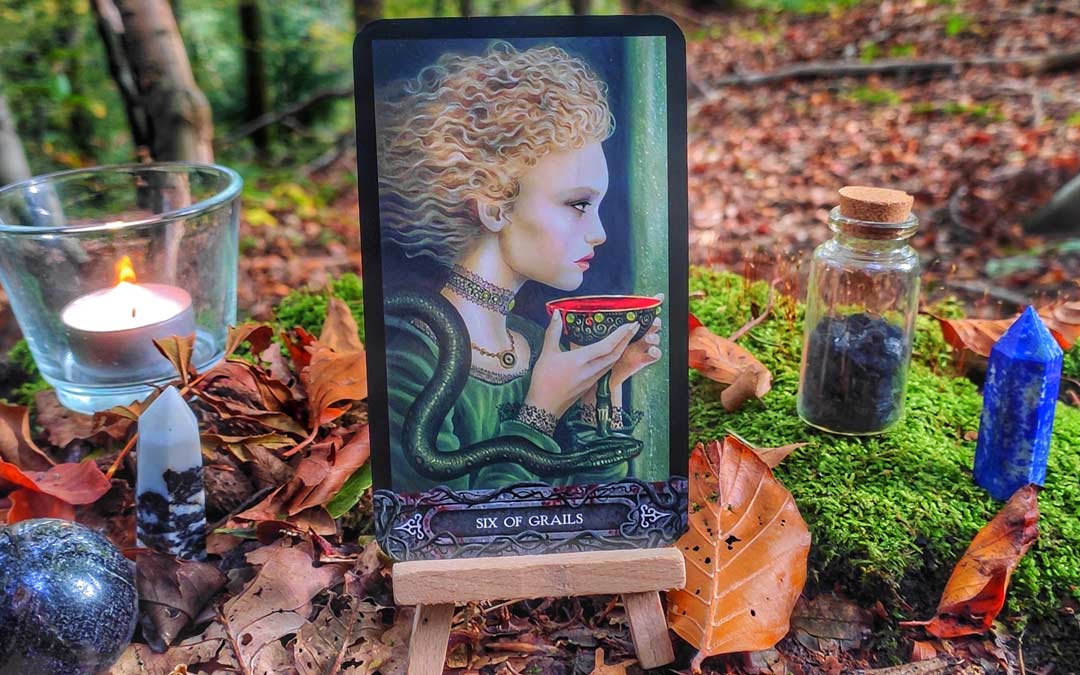
Thank you! You’re initial advice via IG, as well as this blog post, have been so helpful!!!